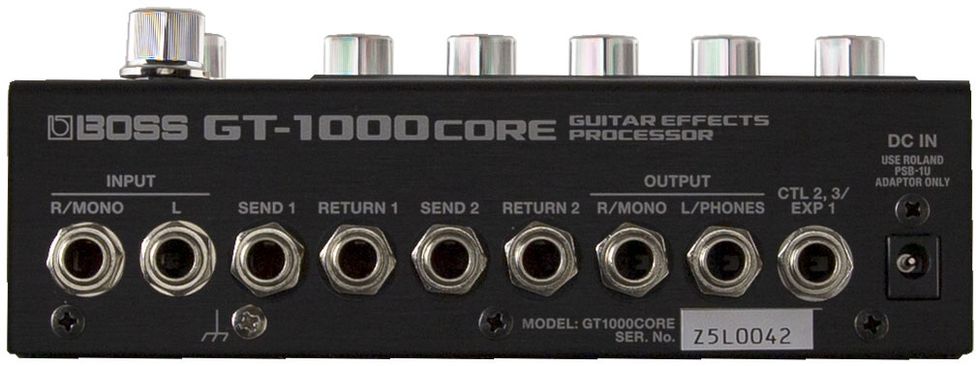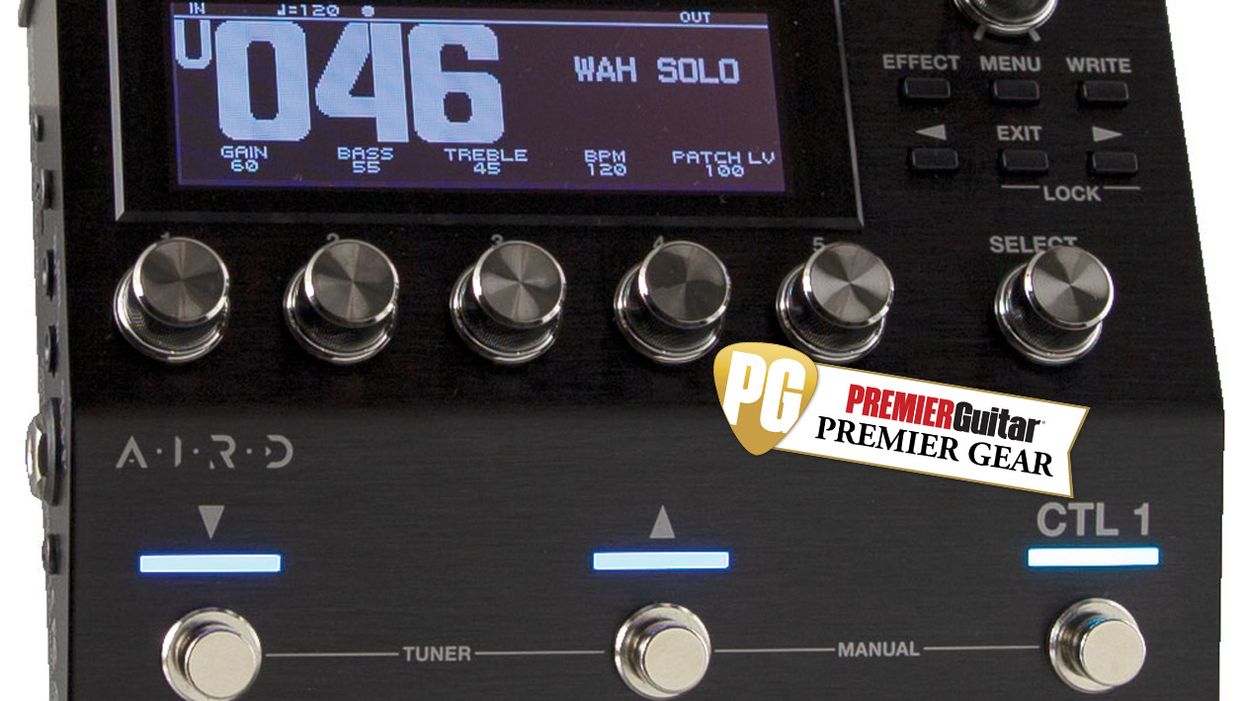RatingsPros:A mind-boggling selection of great-sounding effects and amp sims. Versatile connectivity. Well-engineered and -executed, user-friendly design. Solid value. Cons: Amp simulations could be more realistic. Street: $699 Boss GT-1000CORE boss.info/us | Tones: Ease of Use: Build/Design: Value: |
Boss requires no introduction among guitar pedal nuts. But while the company has made countless classic compact stompboxes since the late '70s, their multi-effects units have become stage staples in their own right. While it is much more than a simple multi-effects pedal (it also features amp simulations and deep programmability), the GT-1000CORE is the newest addition to that branch of Boss' lineage. And although the company likes to emphasize the CORE's relatively small size and ease of integration with pedalboards, it's hard not to be struck by its deep capabilities.
The GT-1000CORE has the processing power of its big brother, the GT-1000, but fewer onboard functions and no built-in expression pedal. Yet there are 140 unique amp and effects types available as well as up to 24 simultaneous effect blocks—all rendered via 96 kHz/32-bit processing and AD/DA conversion. It also has 250 user and 250 preset memory slots. Needless to say, there won't be room here to discuss every sound, editing capability, and programming function at length, but Boss offers excellent online and user-manual resources to help you navigate this substantive unit.
Selection Committee
The user interface includes five push–button/rotary parameter editing knobs, one selector knob, one master output knob, three stomp switches, and six pushbuttons that take care of additional menu, programming, and navigation functions, which are monitored via a 1.75" x 4.35" LCD control screen.
In theory, almost everything can be programmed from the GT-1000CORE itself, but, as with most such high-functioning processors, it can be easier—and instructive—to edit with your Mac or PC via USB and using Boss' user-friendly Tone Studio editing software.
The CORE has stereo ins and outs (the left output doubles as a stereo headphone out), along with connections for several expression and external control pedals, two sets of loop sends and returns for use with other pedals, amps, or processors, and MIDI connectivity. Since it's usable either as a multi-effects processor or as an effect-and-amp simulator, the GT-1000CORE can be configured for output into a traditional guitar amp or full range flat response rig (with or without speaker/cab-sim IRs engaged). The amp simulations use Boss' new AIRD technology, an impulse-response method that evolved from the Tube Logic system in Boss' well-regarded Katana amps. The unit also works great going direct to a DAW for recording and re-amping. And … phew, we haven't even got to the sounds.
Sounding Off
Tested using several guitars and a variety of connection methods to traditional guitar amps and studio monitors, the GT-1000CORE unleashed a mind-boggling selection of great-sounding effects and realistic amp simulations that can be mixed and matched in what feels like infinite ways. As you might expect from Boss, the effects are the real stars of the show, and many of them that I selected from the very impressive range of Boss favorites and other pedals were practically indistinguishable from their originals.

Boss packed plenty of creative presets into the unit, so it's easy to get up and running—and have a lot of fun in the process—without touching a control apart from the selector. Tweaking and saving your own presets is easy enough, though, and you can create, re-shuffle, and manipulate ridiculously complex signal chains that would be tricky to replicate in physical form.
Amid all this virtual stompbox richness, the amp simulations are a nice bonus. They sound good and pretty consistently replicate the experience of hooking up to the Katana platform. That said, I generally experienced a more satisfying “in the room" sound and playing feel by disabling the AIRD and running the GT-1000CORE as an effects unit into traditional tube amps.
The Verdict
The GT-1000CORE is effectively the stompbox collection of a Boss fanatic's dream—all packed into one very compact, practical, and user-friendly box, with a ton of bonus features for flexible connectivity, editing, studio-quality processing, recording, and performance. It's quite an achievement for the price and size. Players obsessed with the most realistic, responsive amp tones and hyper-realistic IRs may need to consider more expensive options. But for a fly rig, or home recording, the GT-1000CORE offers a whole lot of value.
Watch our First Look demo of the Boss GT-1000CORE:










![Rig Rundown: Russian Circles’ Mike Sullivan [2025]](https://www.premierguitar.com/media-library/youtube.jpg?id=62303631&width=1245&height=700&quality=70&coordinates=0%2C0%2C0%2C0)












